Did you ever wonder where your building was made? Your clothing, linens, appliances, and books are all labeled with their place of origin. And so are your buildings, if they have cast iron façades.
Cast iron foundry stamps that indicate what company manufactured the components that make up a building façade can usually be found somewhere on the ground floor of a building, usually down low near the sidewalk. Originally used as a form of advertising, these stamps are blast from SoHo’s nineteenth century past when many of the buildings along SoHo Broadway were built, though many have worn away or have been painted over so many times they are now illegible.
There are approximately 250 cast iron buildings in New York City, most of them in SoHo and mostly built from the mid-1800’s through the late 1800’s. An American invention, cast iron facades were not only less expensive to produce than stone or brick, but also much faster to fabricate, as they were made in molds (rather than carved by hand) in a “kit of parts” that were assembles on site and affixed to the face of buildings. (Read more about cast iron architecture here)
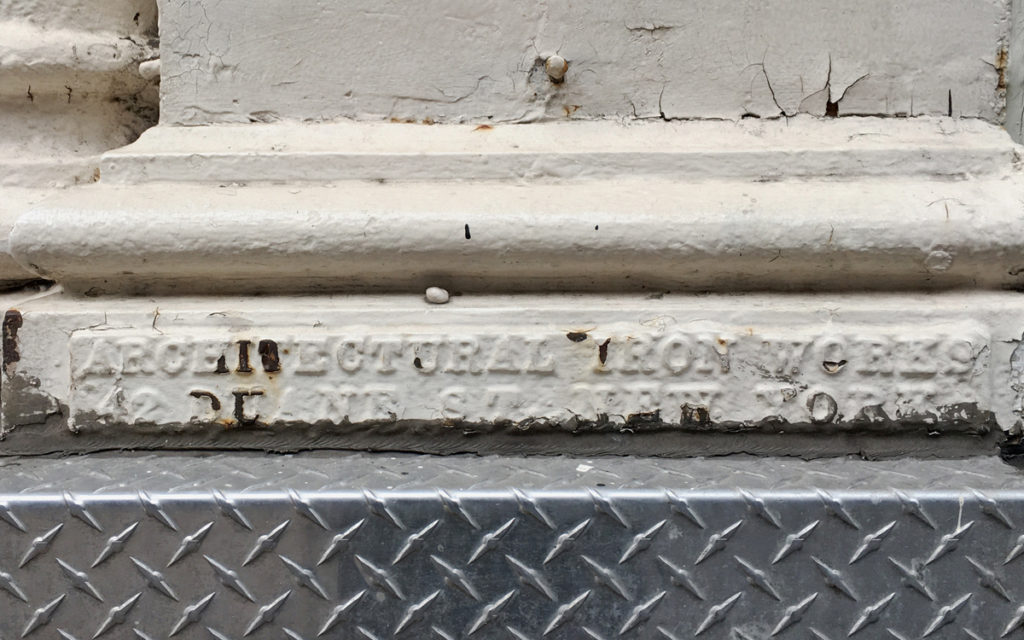
Architectural Iron Works and its owner Daniel D. Badger, whose stamp on the façade of the Bloomingdale’s building is shown above (read more about this building here), was a major player in producing cast iron facades in New York and nationwide. Badger’s company, whose famous illustrated catalogue includes many lithographs that show examples of cast iron building details, was the leading foundry in the 1850s and 1860s. In addition to 504 Broadway, Architectural Iron Works also cast the façade of the Haughwout Building at 488 Broadway on the corner of Broome, which is know as one of the finest examples of cast iron architecture in New York.(Read more about the Haughwout Building here). Badger’s foundry was located first on Duane Street and then moved to East 14th Street, where it took up an entire city block.
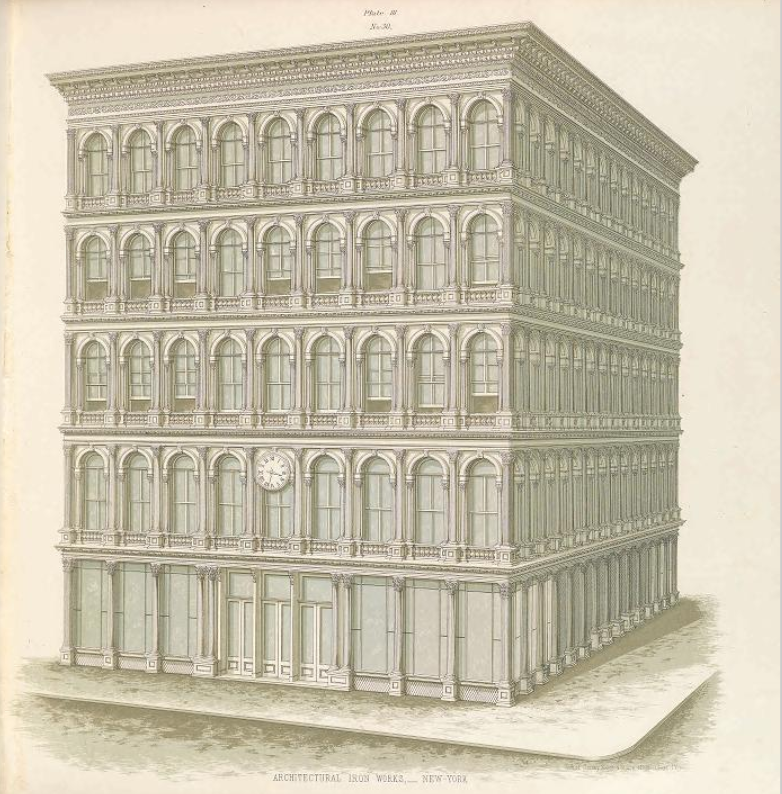
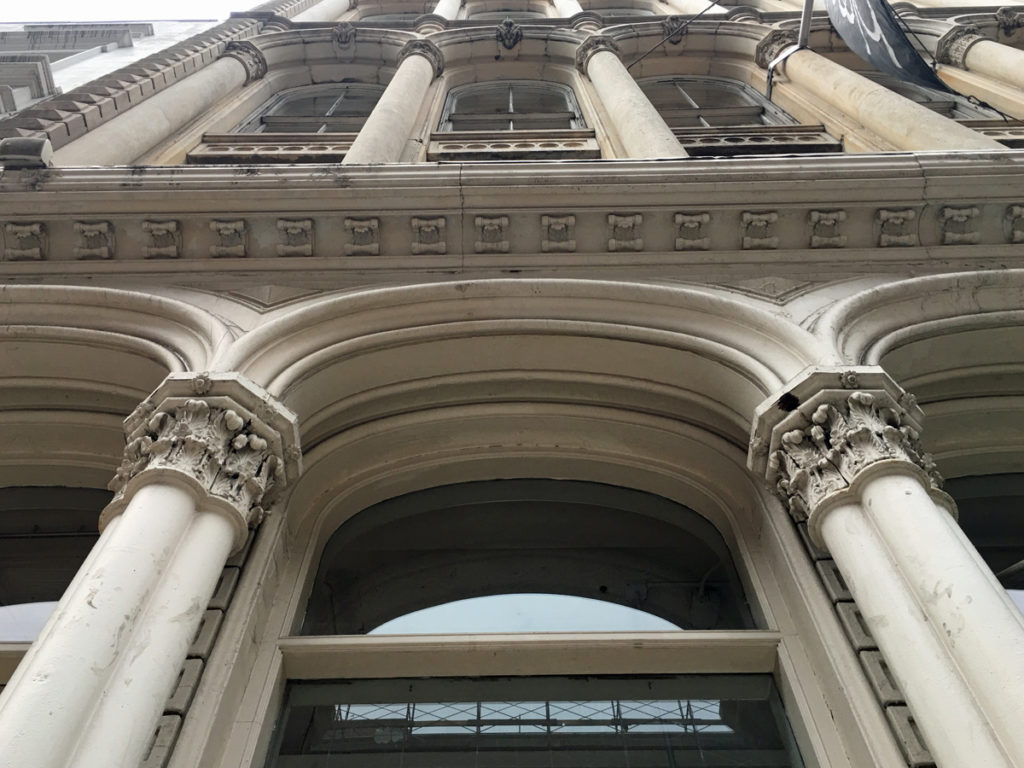
Jackson is another name you will see stamped along SoHo Broadway. Brothers James L. and Peter H. Jackson partnered with Austin H. Throckmorton to form the short-lived Jackson & Thockmorton, who had foundries around downtown Manhattan between 1857-1860.
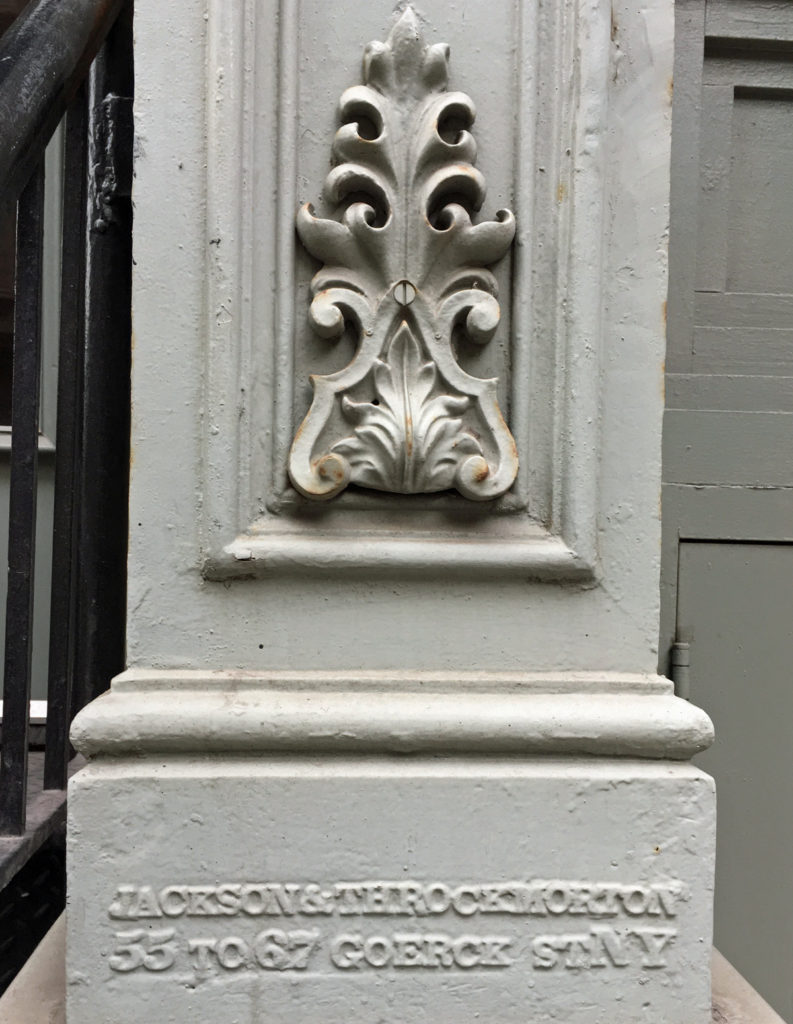
For most of their careers, however, the Jackson brothers operated on their own under various names, including James L. Jackson Iron Works (see below), and had foundries on Goerck Street and then on Second Avenue at 28th Street.
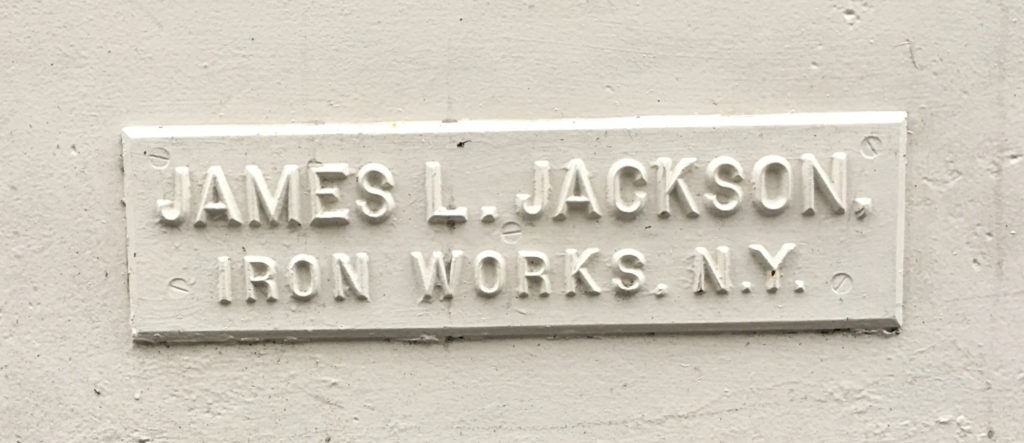
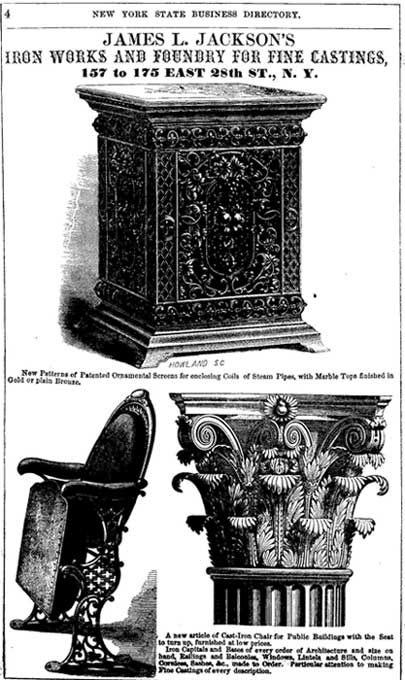
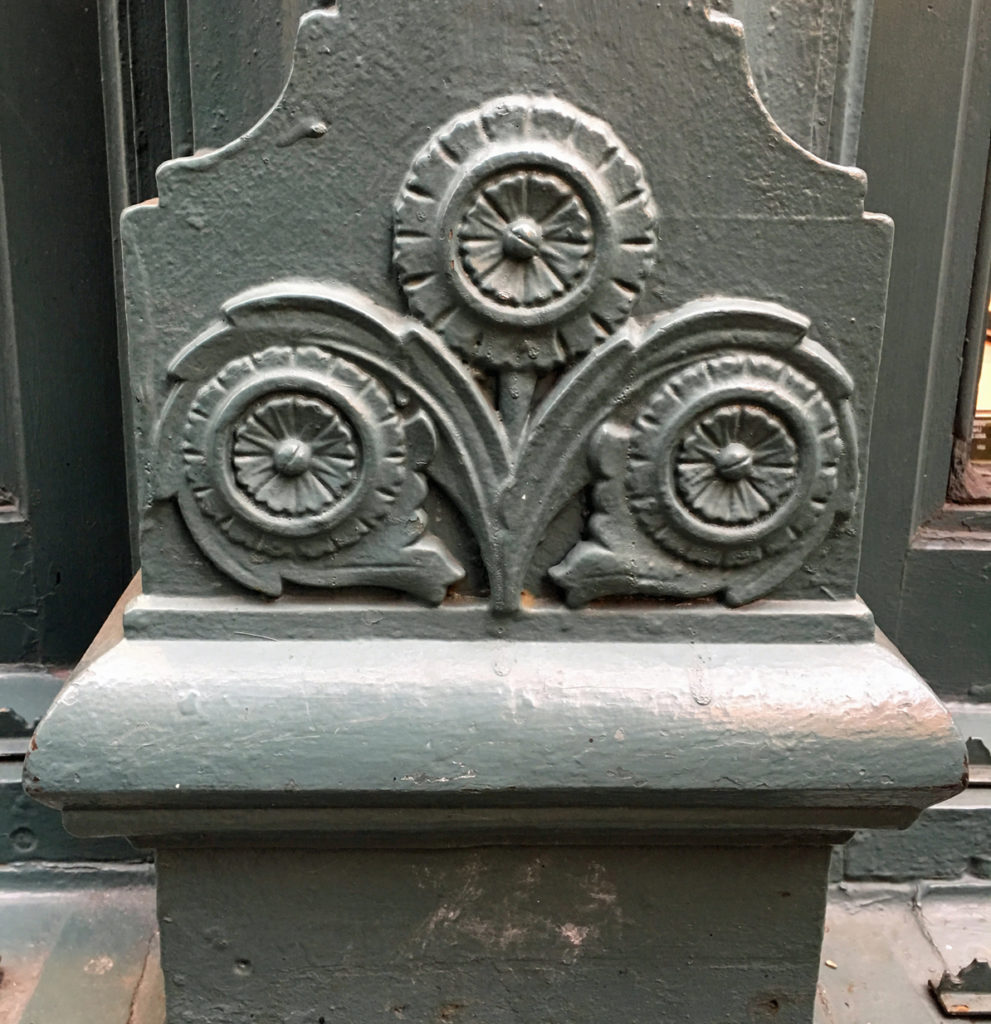
This beautiful cast iron detail can be found on Prince Street near the corner of Broadway outside the Prada Store (Read more about this building here). It was cast by Heuvelman & Co., which had offices just up the street at 842 Broadway and a foundry on Ninth Street in Brooklyn. Owned by architect John Heuvelman in 1865, the company worked on many prominent buildings in New York, including “dome of extension to the New York County Court-house, also the iron-work at the New York Post-office, Astor Library extension, and also a large share of government work,” according to Walter Grutchfiled, whose website waltergrutchfield.net is a treasure trove of information about foundry stamps, foundries and many other things forged, founded, and cast.
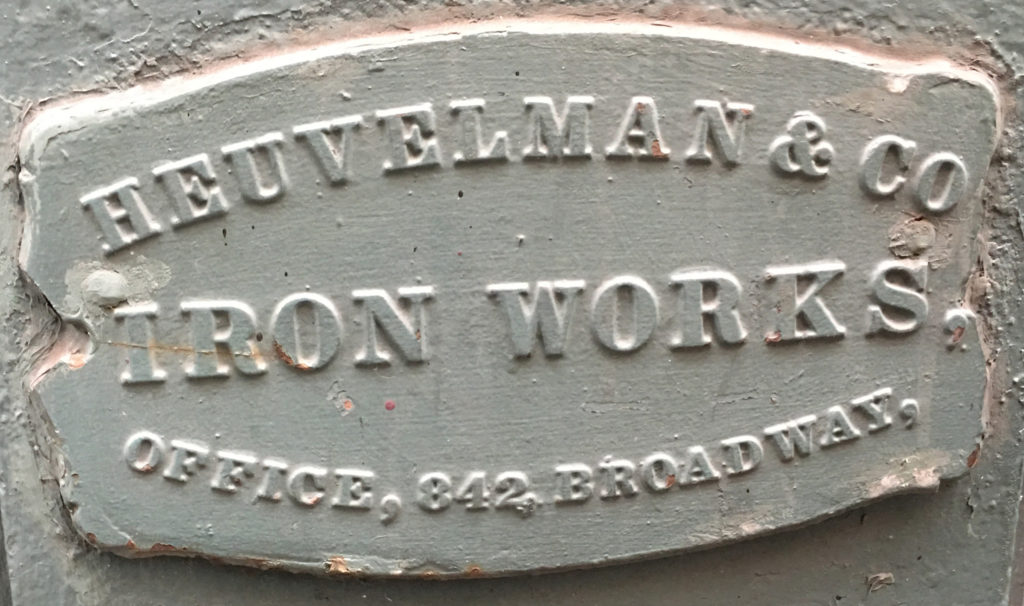
So the next time you go shopping or gallery hopping along SoHo Broadway, or if you’re just going home to unwind, take a peek to see whence the threshold through which you enter originated. Chances are, it’s sourced locally!